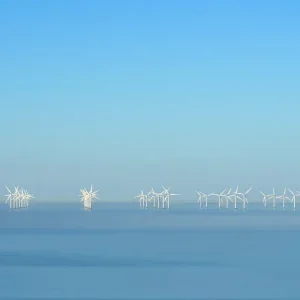China’s largest wind equipment marker, Sinovel Wind, has unveiled a prototype of it and China’s first home-grown 6 MW wind turbine. It intends, says the company, to compete directly with market leaders such as Denmark’s Vestas.
Applications for the turbine onshore have not been ruled out. Tao Gang, a Sinovel SVP, commented: ‘With the development of the wind industry, especially advances in offshore wind technology, the development of larger wind turbines has become an inevitable trend.’
Many turbine makers are now developing bigger turbines. REpower already makes a 6 MW machine and Siemens has just started operating a 6 MW protoype in Høvsøre, Denmark. Vestas, the world’s largest manufacturer by market share, in March 2011 unveiled a 7 MW offshore turbine, which may be in production in early 2015, while Alstom and Nordex have both outlined their plans for 6 MW machines. It is also believed that Beijing based Sinovel has started developing a 10 MW prototype.
Sinovel is being driven hard by a large home market. After years of robust expansion, China overtook the US last year as the country with the most installed wind capacity. China is also racing to tap offshore wind power. The first 100MW offshore wind farm went into operation in Shanghai in August 2010, with 34 Sinovel made 3MW turbines installed.
Other Chinese WTG makers are also developing large capacity turbines. Xiangtan Electrical Machinery Co.. (XEMC), based in central Hunan Province, produced a 5 MW prototype last October.
Chinese wind turbine makers have expanded their output through licenced production or joint ventures with foreign partners. China has over 80 wind turbine makers. The top three wind turbine markers in the country, Sinovel, Goldwind and Dongfang Electric, are among the top 10 makers in the world. By the end of 2010, domestic cumulative wind installed capacity amounted to 44.7 GW, and accounted for 23 percent of the world total, according to the CWEA.
But not everyone is so upbeat about prospects. Analysts UBS Securities suggest that annual installation may have peaked in 2010 and turbine makers may suffer overcapacity and keen price competition this year.






